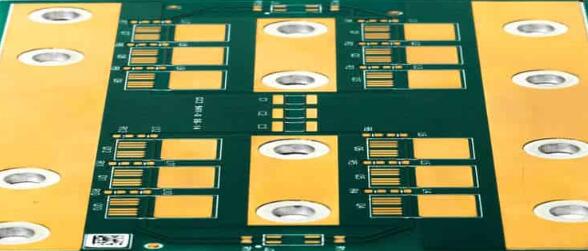Metal PCB board, also known as thermal PCB or metal back PCB, is a type of PCB based on metal materials, used for the heat dissipation part of the board.

Metal PCB boards are a subset of the PCB family, based on metal in the heat dissipation area. The insulation layer (also known as the IMS layer), copper foil, and metal plate are the three components that make up multi-layer printed circuit boards. High mechanical strength, excellent processing performance, good heat dissipation, good magnetic conductivity, and high tensile modulus.
Methods including the use of conductive and non-conductive materials were used to achieve this result. Most metal PCB boards include aluminum or copper as their substrate or a combination of aluminum and copper or other metal alloys.
The advantages of metal PCB boards
1. Compared with standard circuit board materials, the thermal expansion and dimensional stability of metal PCB materials are greatly improved. Metal core PCB layout can improve power density, electromagnetic shielding, and capacitance coupling.
2. Even if they are not strictly necessary, hot through holes are often added to metal PCB prototypes to improve their thermal performance. When high-power LED lighting is required for small enclosures, engineers usually choose copper metal PCB LEDs because copper has better thermal performance than aluminum.
3. Insulated metal substrate technology performs excellently when a large amount of heat must be removed. Due to the many advantages of metal PCB boards over FR4 PCBs, they are widely used by engineers and designers.
4. They can integrate dielectric polymer layers with high thermal conductivity to reduce thermal resistance. They transfer heat 8 to 9 times faster than FR4 pcb. They can dissipate heat, reduce the temperature of heating components, and thus improve their performance and lifespan.
Comparing the metal PCB with the FR4 PCB
1) Thermal conductivity: FR4 has low thermal conductivity. It is around 0.3W. For metal circuit boards, their thermal conductivity is higher. This range ranges from 1.0W to 4.0W. In most cases, the value is approximately 2.0W.
2) Plated through holes: Typically, FR4 PCBs use plated through holes. However, in MCPCB, you cannot plate through holes for a 1-layer PCB. This is because all of its components are usually surface-mounted.
3) Heat release: For FR4 PCBs, heat release includes via holes to ensure heat transfer. With the extension of drilling cycles, many processes have been added. Metal PCB materials have their heat dissipation function. Eliminates processes such as drilling, electroplating, and deposition.
4) Solder mask: The solder mask of FR4 PCB is usually dark in color (black, blue, red, green). They are usually applied at the bottom and top. For metal PCBs, their solder mask is usually white. They only apply to the top.
5) Thickness: FR4 PCBs have different thicknesses and can use different layers and material combinations. The thickness variation of metal PCB boards is limited by the thickness of the dielectric and the available thickness of the substrate.
The substrate of metal PCB is metal, used for the heat dissipation area of the board, using unique substrate materials specifically designed to help improve the reliability of the design. Metal PCBs are widely used in circuit boards, involving cooling issues and the use of a large number of LEDs.